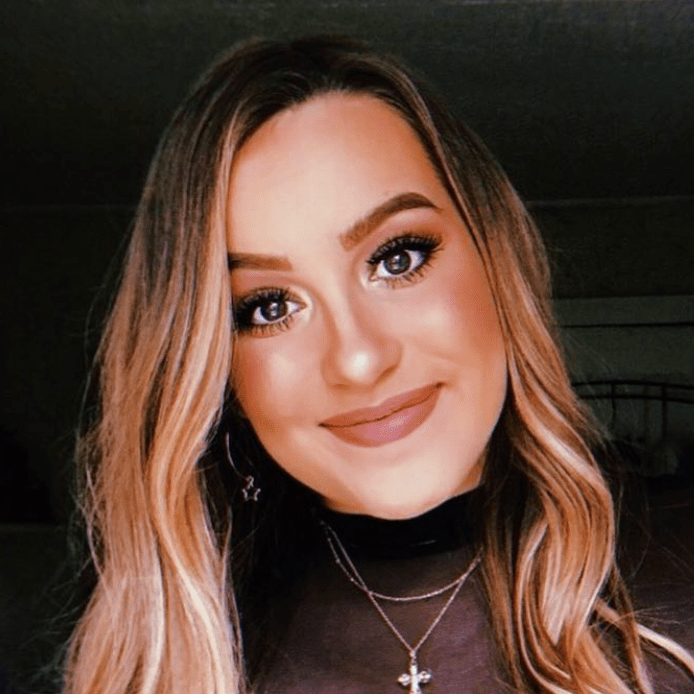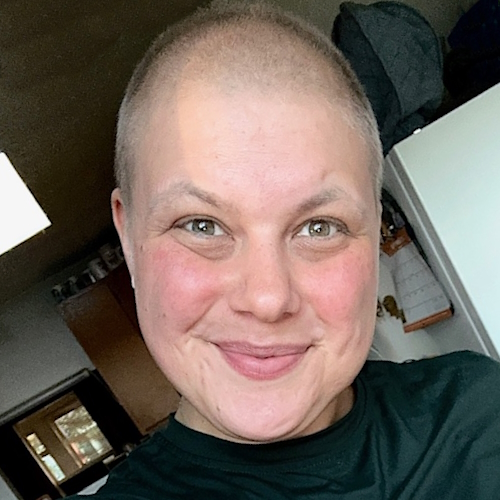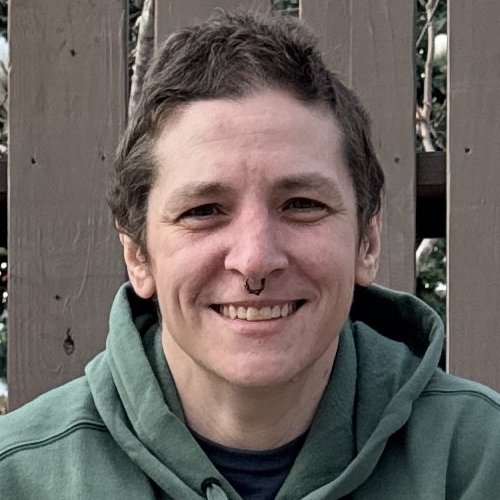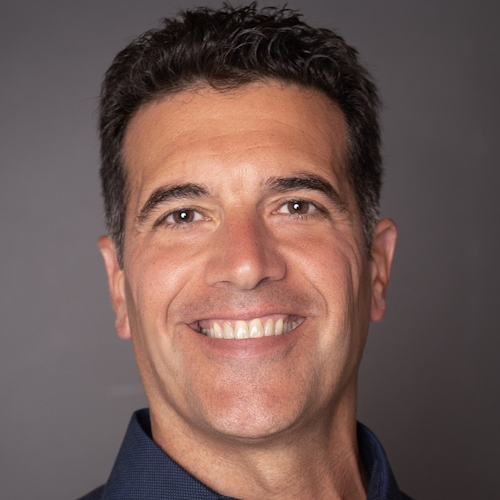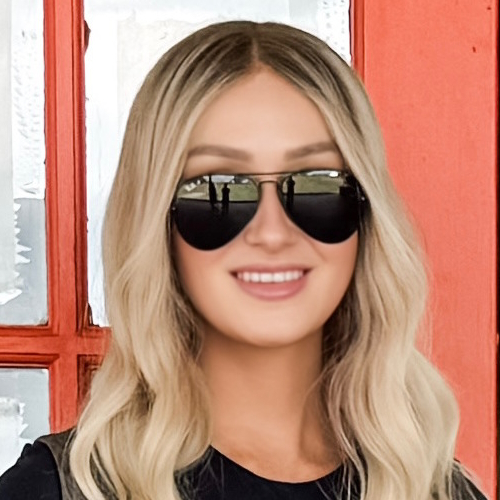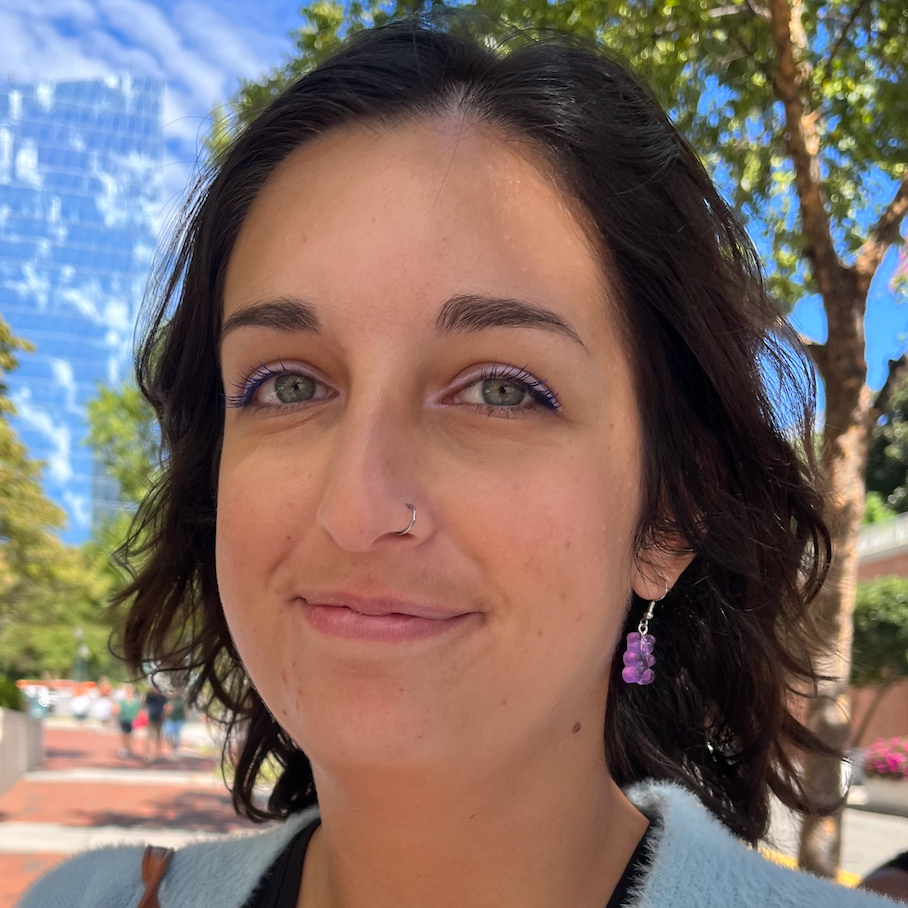Erin’s Stage 4 Diffuse Large B-Cell Lymphoma (DLBCL) & Burkitt Non-Hodgkin’s Lymphoma Story
Erin was diagnosed with stage 4 non-Hodgkin’s lymphoma. She had a combination of two subtypes: diffuse large B-cell lymphoma (DLBCL) and Burkitt’s lymphoma, prescribing her 2 types of chemo.
Explore Erin’s detailed story below. She talks about hair loss, the best support she got as a patient and being a self-advocate. Thanks for sharing your story, Erin!
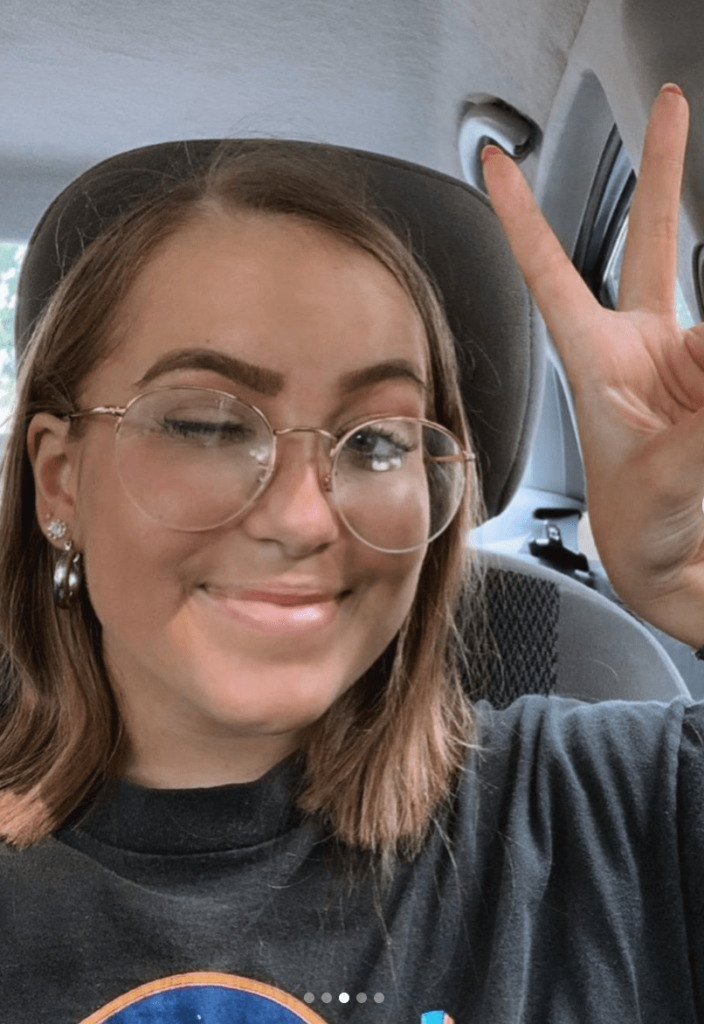
- Name: Erin R.
- 1st Symptoms:
- Lower abdominal pain
- Blood in stool
- Losing appetite
- Diagnosis (DX):
- Combination of two non-Hodgkin’s lymphoma types, sometimes classified as “high-grade B-cell lymphoma”
- Diffuse large B-cell lymphoma (DLBCL)
- Burkitt lymphoma
- Staging: 4
- Path to DX:
- Colonoscopy finds 4cm mass
- Treatment:
- Chemotherapy
- Part A: R-CHOP with Hyper-CVAD
- Part B: Methotrexate, rituximab (Rituxan), Cytarabine
- Chemotherapy
- Side Effects:
- Nausea
- Hunger
- Hair loss
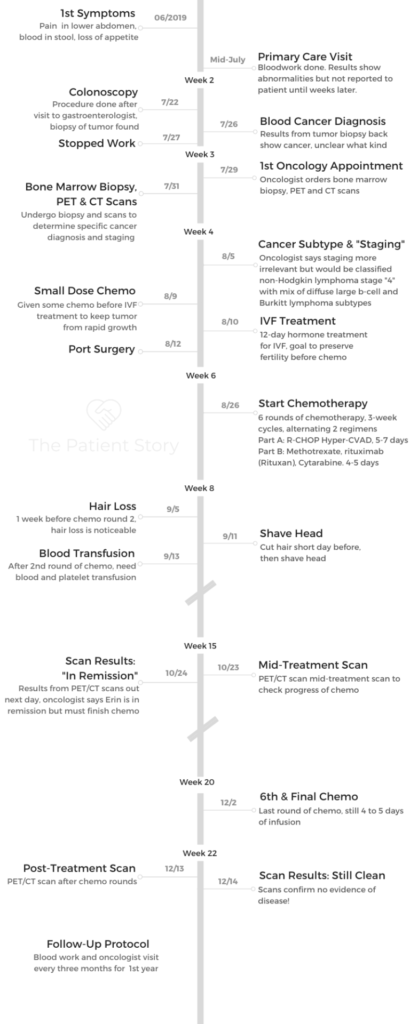
This interview has been edited for clarity. This is not medical advice. Please consult with your healthcare provider for treatment decisions.
As much as you want to stay really positive and strong the whole time, there are moments where you aren’t. I wish I knew that that was okay and valid.
I think I beat myself up a lot because I felt certain ways or reacted certain ways.
I wish I knew whatever reaction or way I felt about anything during my treatment was justified and valid.
Erin R.

Erin’s Story on Video
Getting Diagnosed
First symptoms of cancer
The primary symptom that ultimately led me to seeing a doctor was the lower abdominal pain. That was my first symptom, along with blood in my stool and losing my appetite, but the stomach pain just kept persisting.
For a while, I was just waiting for it to go away. It did it for about a month, and then I just remember telling a lot of my friends and family that I was getting more concerned that this was going to be actually a serious problem.
A lot of people were downplaying it and making it seem I was being overdramatic, but it just kept persisting and got to a point where I was about to leave for college.
I didn’t want to have to deal with any potential medical things by myself at school, and so I decided to see a doctor real quick before I leave.
I didn’t think it was gonna be a really big deal. But I was like, “No, I have pain. Maybe I should check it out.”

Primary care visit
I went to my primary doctor. He was concerned about the blood in my stool and the pain in my stomach, and he wanted to know what was causing that. He recommended me to a gastroenterologist, and then we immediately scheduled a colonoscopy.
Gastroenterologist visit
The gastroenterologist was pretty nonchalant. He was just like, ‘We’re going to get the colonoscopy and see what’s causing the problem.’
Even afterward, when I was told that I had a tumor, he used the term “mass,” which I think made it still seem it wasn’t going to be that serious because I feel the word “tumor” versus “mass” has a different connotation
Even when I was told that, he was pretty reassuring. “There’s a mass, but we’ll sample it and call you back in a few days with what it was.”
What happened during the colonoscopy?
In the colonoscopy, they put the camera up inside my intestinal tract to take pictures. The pain in my stomach was due to a mass where my small intestine met my large intestine. It was about 4 centimeters when they found it.
That’s that’s how I found that. It was through the colonoscopy.
We planned on meeting back with my gastroenterologist in about a week to discuss what we wanted to do to move forward. He was going to call in a few days with the results. He said 2 to 3 days, and we ended up not getting a phone call.
That led me to believe that it wasn’t going to be that big of a deal, and it was just going to be going into the doctor’s appointment, maybe having a surgery or something. But it was that follow-up appointment that I was told that I had cancer from the biopsy.
When did you get the cancer diagnosis?
I was running a fever that day, but I didn’t think it had anything to do with what was going wrong with my stomach. I just thought maybe I got sick or something. Me and my mom were in the waiting room just joking around.
I don’t know if it was denial that it could be really serious, but I just went in really not thinking it was going to be that big of a deal. We sat in the room waiting for my doctor. He just came in, and it was the first thing out of his mouth: ‘It’s cancer.’
I could tell he was kind of shocked by it, too, by the way that he prefaced everything after my colonoscopy. He was reassuring me that he really didn’t think that that was going to be the outcome, especially because I’m so young. I feel [it] is a wrong assumption a lot of people have that cancer doesn’t happen to young people.
They knew that it was cancer. I’m pretty sure they knew it was non-Hodgkin’s, but they weren’t sure specifically what kinds of non-Hodgkin’s, so they wanted to do another test: a bone marrow biopsy.
They sent my biopsy sample to the hospital that I later went to, Northwestern, because I decided that right after the diagnosis, that’s where I wanted to go. I knew pretty quickly.
I knew that it was cancer, and I knew that it was non-Hodgkin’s. The appointment itself was very quick. He just kind of came in and told me I had cancer, referred me to an oncologist, and that was the whole appointment.
How did you process the cancer diagnosis?
I think it was just so much shock. I didn’t really react at all. My mom was in the room and, of course, she just immediately started crying.
I had no reaction really. I think a lot of that was due to the shock, but I think overwhelmingly, I was really uneducated on what that was going to mean for me going forward in terms of treatment.
I was still under the impression I was going to be going back to college in a week and maybe seeing a doctor. I didn’t understand the full scope of everything.
It was really easy for me to be in denial about it for quite a while. It wasn’t until I started to see how everyone else reacted to the news that I thought, “This might be more serious than I want to admit to myself.”
»MORE: Processing a cancer diagnosis
Breaking the news of cancer to loved ones
I think because I was in such a state of denial, I was able to be a lot more lighthearted about it and make it seem not as big of a deal. I feel I am grateful for that because I feel when breaking that kind of serious news, me being able to be more positive about it helped us handle it a lot easier.
»MORE: Breaking the news of a diagnosis to loved ones
How did you handle the influx of concern?
My parents were great advocates for me. In terms of my family, my parents would advocate for me a lot.
Something that I personally noticed was a lot of people would ask my friends how I was doing with a lot of questions. I think some people were a little nervous or didn’t know the right ways to ask me, personally.
My close friends would ask me about my treatment, but I feel like the vast majority of my community, a lot of people were scared to ask me and would ask people like my friends.
Treatment Decisions & Scans
Next steps
Once I got my diagnosis, it was zero to 100 really fast. I met with my oncologist, and then I immediately was getting the bone marrow biopsy and the CT and PET scan.
What happened during the bone marrow biopsy?
They put a bunch of lidocaine on my back, so I ended up not feeling it at all. I just felt a lot of pressure. It was just a local anesthetic, but I was given a lot of lidocaine, so it really didn’t hurt too bad.
I personally didn’t look at the needle. I have heard that it is a pretty large needle but definitely not something to be too scared of, because they do take a lot of precaution to make you as comfortable as you can be.
Undergoing a CT scan
You have to drink a contrast solution before the CT scan, which was honestly the worst part, not even the scan, just because I didn’t really like the taste.
[For] the scan, the machine might look really scary, but the process isn’t bad.
You’re just laying in there chilling. I was just daydreaming about what I wanted to do later that day and just trying to take my mind off of it. It definitely looks a lot scarier than it is. I thought it was going to be a lot more complicated looking at the machine than it was in actuality.
How long does it take to get CT scan results?
I believe that I would get them within a few days after, pretty promptly. When I would get my scans, it was pretty close to when I would already have a scheduled appointment with my oncologist for them to go over [the results].
It would be right before I would have a treatment or just a checkup, so I would typically get the results within 2 to 3 days.
Did you experience “scanxiety” waiting for test results?
I don’t think I did much during treatment, because in the beginning I already had the knowledge that I had cancer, so I knew that that was going to be present.
Then after my third round of chemotherapy and during that halfway PET scan, I was put into remission, so I don’t think I had a moment of being super scared.
I feel it more so now after the fact, being done with everything, because you’re given the clear. The thought that you might have to go through all of that again, I think it’s really scary.
»MORE: Dealing with scanxiety and waiting for results
Cancer staging
I found out the results with my first meeting with my oncologist in the city where I was going to be getting a treatment.
She said at that point that the tumor in my stomach was behind my right breastplate, it was in my neck, as well as in my ovaries.
She said she didn’t like to stage them just because it is a blood cancer, but she said if she were to stage it, she would stage it as a stage 4.
Diffuse large B-cell and Burkitt lymphoma diagnosis
She was describing how it was a mix between the 2, which made it irregular and not a typical kind of non-Hodgkin’s that they would see. At that point, they weren’t sure on the treatment regimen that I was going to get.
I was going to be doing in vitro fertilization (IVF), so they had a bit of time to figure out exactly what they wanted to do moving forward.
She described to me that a team of oncologists at the hospital were going to be looking at my case — I guess in my type of cancer — and [deciding] together what they thought the best plan of action would be moving forward.
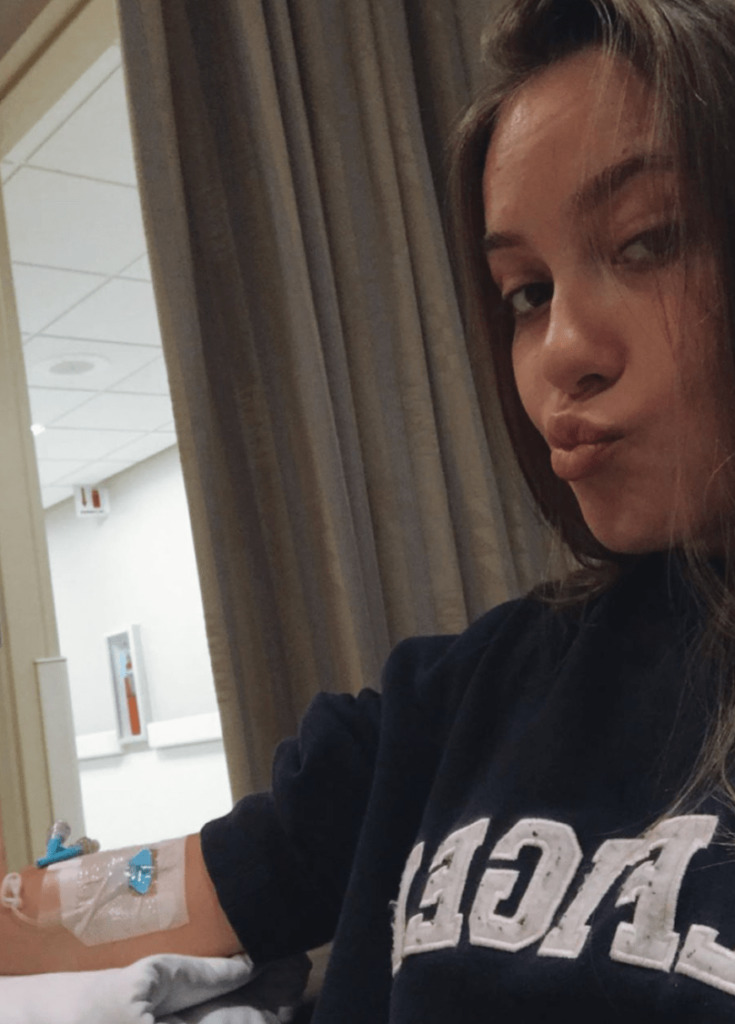
Fertility & IVF
Preserving fertility before chemotherapy
After I met with my oncologist, they were concerned since I was probably going to be getting a pretty strong chemo regimen. They were concerned for me being as young as I was and for my fertility in the future.
They wanted to start IVF prior to me starting treatment, and that started pretty promptly. Within a few days, I started my IVF treatment. That lasted for 2 weeks.
»MORE: Fertility preservation and cancer treatment
Who brought up the issue of fertility?
My first oncology appointment ever was with my local one right after I had the CT scan. That was one of the things she brought up. She brought up wig shops, and she didn’t bring it up in the phrasing of fertility and being concerned. She said it more like, “Oh, we’ll probably want to do IVF.”
I kind of knew what that meant. That’s definitely a hard thing to hear, being that young and just thinking about kids in general. My biggest fear in life was not being able to have kids.
It was definitely a really hard thing to hear, but I’m very grateful that I was given that opportunity.
What’s the IVF process like?
That consisted of about 3 shots every night in my arm, self-injection. Then every morning, if not every other morning, I would have to go to a fertility clinic and get an ultrasound to see the progression of how my ovaries were growing.
The trigger shot I did, I believe, was 24 hours before my egg removal. Right after that, the next morning, I went down to get the procedure to get my eggs removed.
»MORE: A patient’s IVF journal
What is the egg retrieval process?
Honestly, it’s the same as a bone marrow biopsy. I think it seems a lot scarier talking about it than it is in actuality because you are put under for it. I personally wasn’t sore afterwards.
They definitely try to make you as comfortable as you possibly can be for it. I don’t think it is something to be too scared of or worried that you’re going to be uncomfortable or feel any kind of pain.
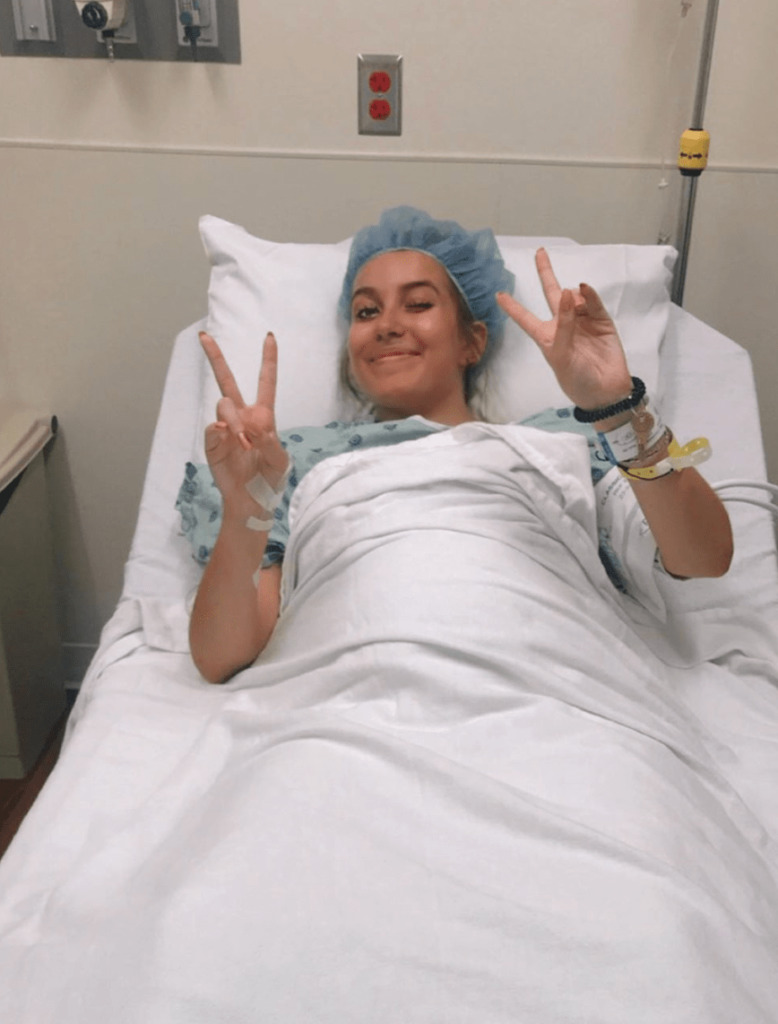
Small dose of chemo during IVF
In the middle of my IVF, during one of my meetings with the fertility team, I was starting to get physically really sick pretty rapidly, and my tumor actually doubled in size within the matter of a week.
They could see how sick I was. I was in a wheelchair at that point, and I wasn’t even able to walk in, so they were just concerned.
They wanted to stop the cancer from growing a little, but they didn’t want to give me too much chemotherapy to where it would mess with my fertility since the cancer was in my ovaries.
That landed me in the hospital for, I want to say, 4 or 5 days, and I was given Rituxan. It’s not uncommon for people to have a reaction to Rituxan, but I think in large part due to the tumor, my stomach was very full of fluid to where I looked like I was pregnant. I had a really bad reaction to it.
Also during that day, I got my port put in. Once I was released, I think I did the IVF for 3 or 4 more days.
Then I had the procedure, and then immediately after I had the procedure, I was admitted into the hospital to start chemotherapy.
Chemotherapy
Describe the port surgery
I actually had my port put in on my 20th birthday. I think the worst part for me is just always the fasting, not being able to eat, along with waiting to get it done.
When I went to go get the procedure, [it was the] same thing. I was put under for it, so I didn’t really feel any pain or discomfort.
I think the port site pain or discomfort from the surgery was a few days after all the numbing wore off, and it was just a little sore.
Did you like the port?
The port did work well for me. There wasn’t any discomfort. I remember when I was home after [the surgery], it was a little bit tender and sore.
Mentally preparing for chemo
I had a little birthday party in my room with balloons and family and friends. That definitely helped with getting my mind off of everything. I didn’t think about the surgery too much.
But like I said before, I was in denial about everything for a while. When all of these major events were happening, I just didn’t really see it as a big deal.
I was just, “Okay, I had to go get surgery.” I didn’t know anything. I guess I didn’t understand at that point still how serious everything was and everything that I was going through.
My first dose of Rituxan I got through an IV, and then my infusions were going to last so long it was important for me to get that port in, so I wasn’t harming my veins too much with the chemotherapy.
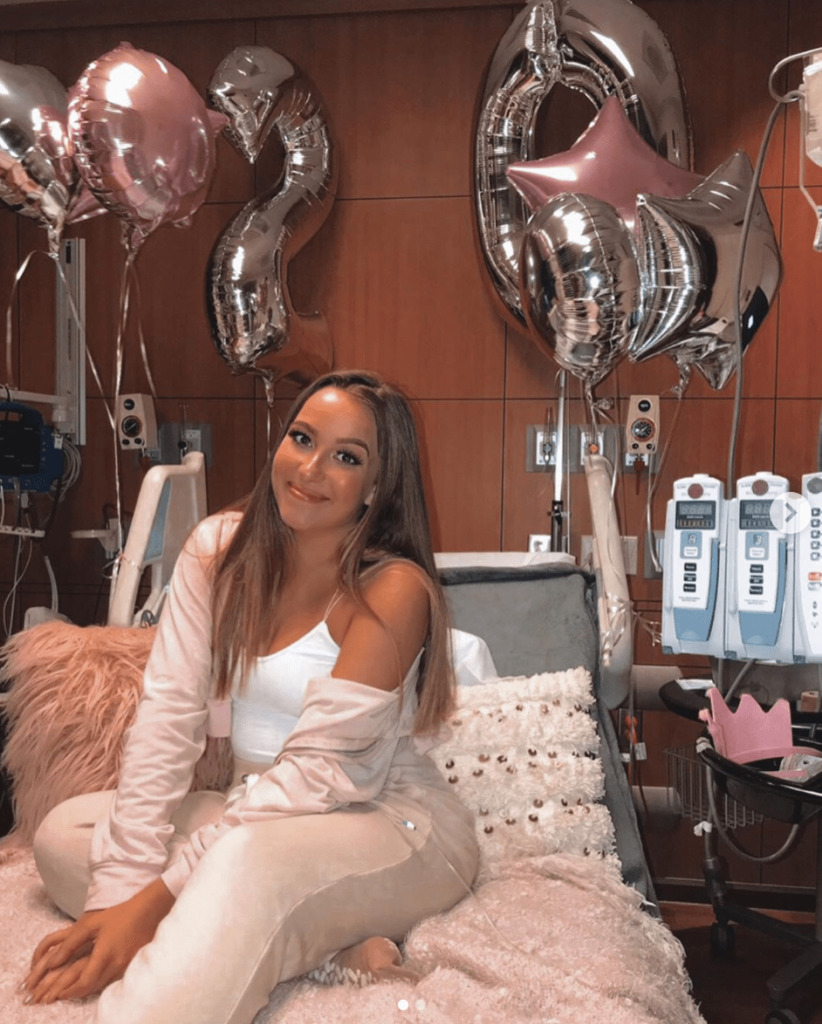
Describe the chemotherapy regimen
Summary:
Part A: R-CHOP with hyper-CVAD
Part B: methotrexate, rituximab (Rituxan), cytarabine
I had a Part A and a Part B in my regimen. Each time that I would go in, it would switch off from Part A to Part B. In total, I had 3 cycles of each.
The Part A would last a little bit longer than the Part B. I believe that ran for 5 days. After I would finish my chemotherapy, they would keep me in the hospital maybe for a day or so on fluids or platelets or blood if necessary, just to make sure that I was fully in a state well enough to leave the hospital and be at home.
Part A will typically last about 5 to 7 days. Then my Part B, if I was lucky and all my levels were looking good, I could be out in 4 days. The Part B would range from about 4 to 5 days.
I was admitted into the hospital, and I received it inpatient. My infusions were continuous, so I would be hooked up to my IV for either 5 days at a time with Part A or about 3 days at a time with Part B.
Was the combo chemo regimen to address your “combo diagnosis”?
I’m not sure if I got Part A for the differing types. I think combination of a chemotherapy was due to it being not a more regular diagnosis. Basically, they told me that it was like the diffuse large B-cell (DLBCL) but it was also like Burkitt in the way it was very fast growing. It had components of both of the differing kinds.
That’s why I think I had a more personalized chemotherapy regimen.
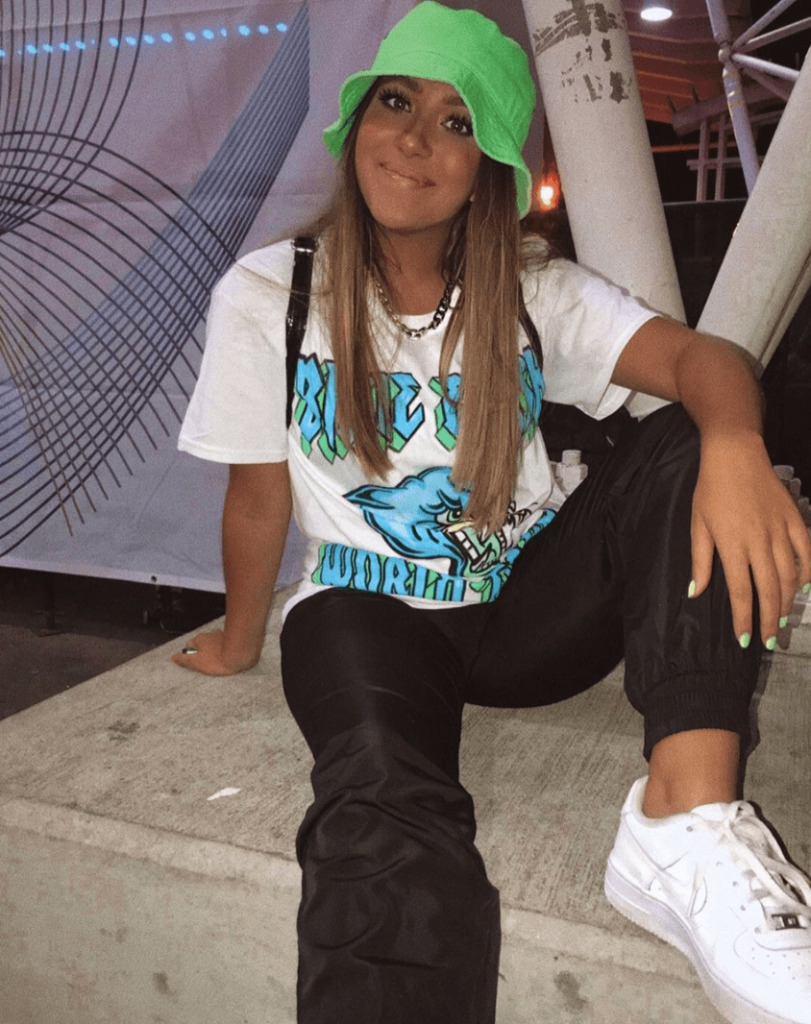
Checking into the hospital
I would go to the hospital, and prior to me getting admitted, I would go and get my blood drawn by the staff. Then I would wait to get taken up to my room.
Once I got into my hospital room, I would get settled for a while, and it would normally take a few hours for my chemotherapy to get ready. I definitely had some settling-in time when I would first get there, and sometimes they would start me off with some fluids beforehand.
It would take a few hours for my chemo to start, and then once I was on it, it was pretty continual until right when I was going to get released. The infusions are around the clock, and my nurses would come in pretty frequently.
How long were the chemo infusions and hospital stay?
For my Part A, my infusions ran for about 5 days at a time, and they wouldn’t discharge me until my levels looked adequate enough — my blood counts and my potassium and things like that.
Even though my infusions would only last 5 days, I would sometimes be in the hospital for 7. That also could be due to my chemo taking a little bit longer to get started, and so that would push back the timing of everything and cause chemo to be delayed.
What’s dose-adjusted chemo?
They would take my weight and everything when I would get into the hospital, so they would know the correct dosages for the chemotherapy.
Sometimes that would fluctuate a little bit, and so there would have to be changes made to my chemo and having the pharmacy being able to get it ready.
Sometimes there was some delays, and so the process of me getting my room could take a few hours, just waiting to get my room. The few hours it took to get my chemotherapy could push my stay a whole day back or 2.
Then for the Part B, it normally was a little bit shorter, around 4 or 5 days, but I think that infusion only ran for 3 days.
Chemotherapy Side Effects
Describe the side effects
I personally didn’t really feel a lot of discomfort or side effects from the chemotherapy itself during treatment. I felt side effects a few days after finishing it.
The only thing I really noticed during my treatment was that I would get very, very hungry due to the prednisone or sometimes would feel kind of nauseous to where I wouldn’t want to eat. In terms of side effects that I felt during the chemotherapy, that was about the only thing.
I didn’t really have any side effects, except losing my hair. Then my second [cycle] was definitely when I felt the most sick. After my third [cycle] was when I was able to go out and do a lot more things, whereas before I was very much bedridden.
What helped prevent or lessen the side effects?
I was on a lot of nausea medication when I was in the hospital, as well as a lot of pain medication.
I think without that, I would have been a lot more nauseous due to the chemotherapy or in more pain because of just everything in my stomach.
I was definitely given the medication to where I was able to be pretty comfortable, given the situation in my hospital bed. I personally would prefer for myself being on nausea medications and pain [meds] around the clock.
If I were to request nausea medicine after already feeling the sensation of being nauseous, I would end up just throwing up regardless and probably throw up my medication.
My first round of treatment was a test run to have the knowledge that I was pretty nauseous from all of it. Because of that, they kept me on an around-the-clock nausea medicine.
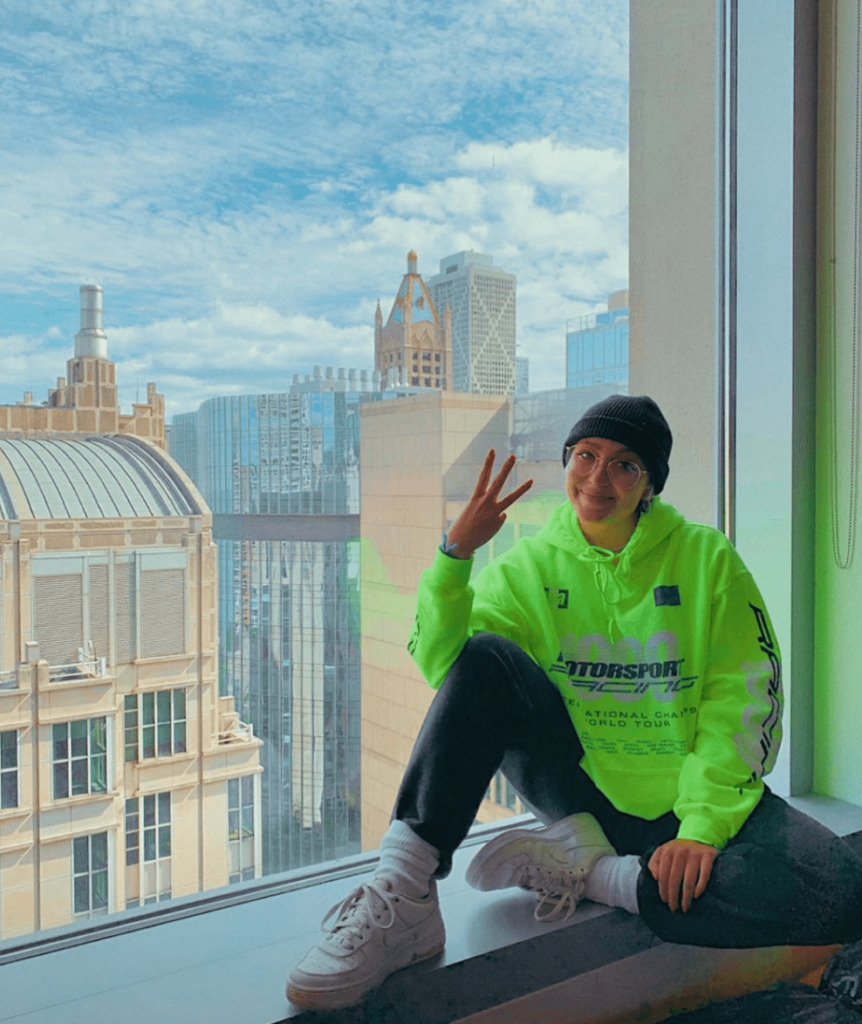
»MORE: Cancer patients share their treatment side effects
How to pass time in between chemo cycles
Chemotherapy for a week, and then the second week recovering. It was definitely a lot of fatigue and a lot of nausea. I find myself just laying in bed or laying on the couch, watching Netflix or trying to find more mindless activities: coloring books or something that passed the time.
I found being in the hospital and being kind of isolated from people mentally draining.
In that first week, I would also feel the need to just mentally get myself back together before I could really fully engage with a lot of people. It was a lot of physical recovery, as well as a lot of mental recovery.
Side effects improving
At the beginning of my treatment, I was overall very physically sick in general, so I was feeling very fatigued and not the best. The side effects, I was still learning how to manage them, so at that point it was very challenging.
After I had a round under my belt, I had a better understanding of how to manage my nausea and everything. I knew how long it was going to take for me to fully reboot and get back to a better state.
After my third round of chemotherapy — aside from the first few days of nausea, which for me was my primary side effect — I was at a pretty good place physically.
Losing hair from chemotherapy
It was about a week before I was going to go in for my second round of chemotherapy. It was in the shower. I saw some hair falling out, but at that point it wasn’t heavy. It was the very beginning stages of it. It looked like it was a little bit more than normal.
I anticipated losing my hair was going to be happening soon, so I understood that. That was the beginning of it.
I thought it would be a lot harder to progressively watch it fall out, especially because I had very long hair at that point. I found myself avoiding brushing it for the first few days, because I didn’t want to see it fall out.
Deciding to shave your head
It was getting so close to my second round of chemotherapy that I didn’t want to let it get to the point where I wanted to shave it and have to do it in the hospital.
I knew it was going to be a really emotional experience, and I wanted to be able to be home and have time to myself to feel all the emotions that come with that.
I ended up wanting to put it in my own hands and rip off the bandaid. The first day that I went into the salon and had the intention of shaving my head, I actually did the cancer cut, as a lot of people call it.
It’s the blunt short hair cut, because it’s a lot easier when your hair is a little bit shorter to lose it versus when it’s long, mentally as well as physically — the hair shedding.
The big shave
I had that short hair for about a day, and then I decided to shave it all off because although I didn’t have control in the situation of losing my hair, at least that gave me a level of control, taking it into my own hands and shaving versus letting cancer let it completely fall out.
Although shaving my head was a very difficult thing for me, in the grand scheme of things, it made me feel a lot more empowered.
Being able to put that aspect of it in my own hands and be able to shave it myself made it a lot easier than it would have been, prolonging it and letting it fall out.
Either option is totally fine. I know a lot of people choose to keep their hair and have it progressively fall out, but for me, I just knew that it was going to be a really hard thing for me to deal with, so I’d rather put it into my own hands.
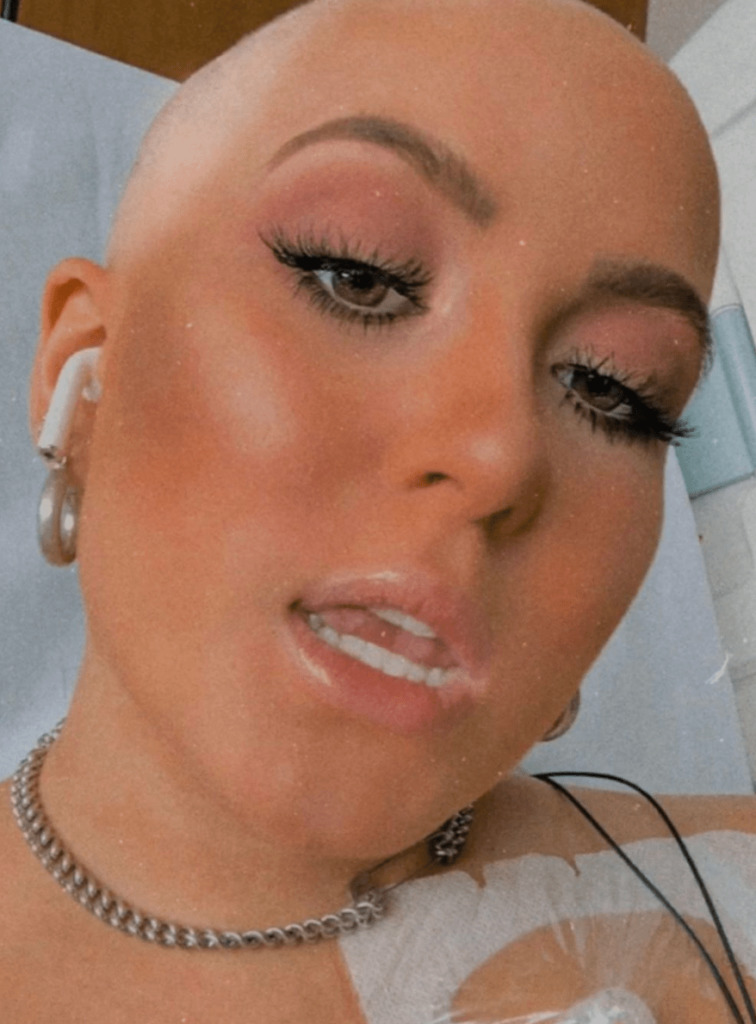
Blood transfusions
I think it was around the [second] round of chemotherapy. After my round, I would tend to [have low red blood cell counts] during that break and have to go back to the hospital, needing blood transfusions. The progression of chemotherapy gets more hard on your immune system.
In the beginning, that wasn’t too much of a concern. I feel my immune system was able to bounce back a lot quicker during my times off between my chemotherapy.
For the last 3 cycles, the gaps in between, I needed a blood and platelet transfusion, if not a few. I would get that fever over 100.4 and be put back in the hospital because of being neutropenic, something that I faced a lot more in my second half of treatment.
Neutropenia & Neulasta (pegfilgrastim) shots
I was given Neulasta right before I would physically leave the hospital. I would get blood counts taken twice a week during the 2-week gaps that I wasn’t getting chemotherapy, so in total 4 times before my next chemotherapy, just to monitor all my levels.
From that, we would get a good picture of when I would need to get blood or go to the hospital. The Neulasta would kick in about a week after.
I noticed more toward the end of treatment it would take longer for the Neulasta to kick in and spike up my counts, which was the reason I had to go to the hospital more for being neutropenic.
Your [white blood cell] counts dropping is inevitable because of the chemotherapy, but Neulasta a lot of the time is good at bouncing it back up right away. For me, it took a little bit longer for it to kick in.
Neulasta side effects
I experienced [bone pain] only for my last 2 rounds, and by the end, it was pretty painful. I maybe might have felt it a little bit in the middle of treatment, but it was more at the end.
They recommended Claritin to take, which helped in the beginning when it was minor, but my oncologist ended up just prescribing me a painkiller to help with it.
Same with my counts and everything, I feel like in the beginning it wasn’t a problem. It was towards the end of treatment that those things started to arise for me.
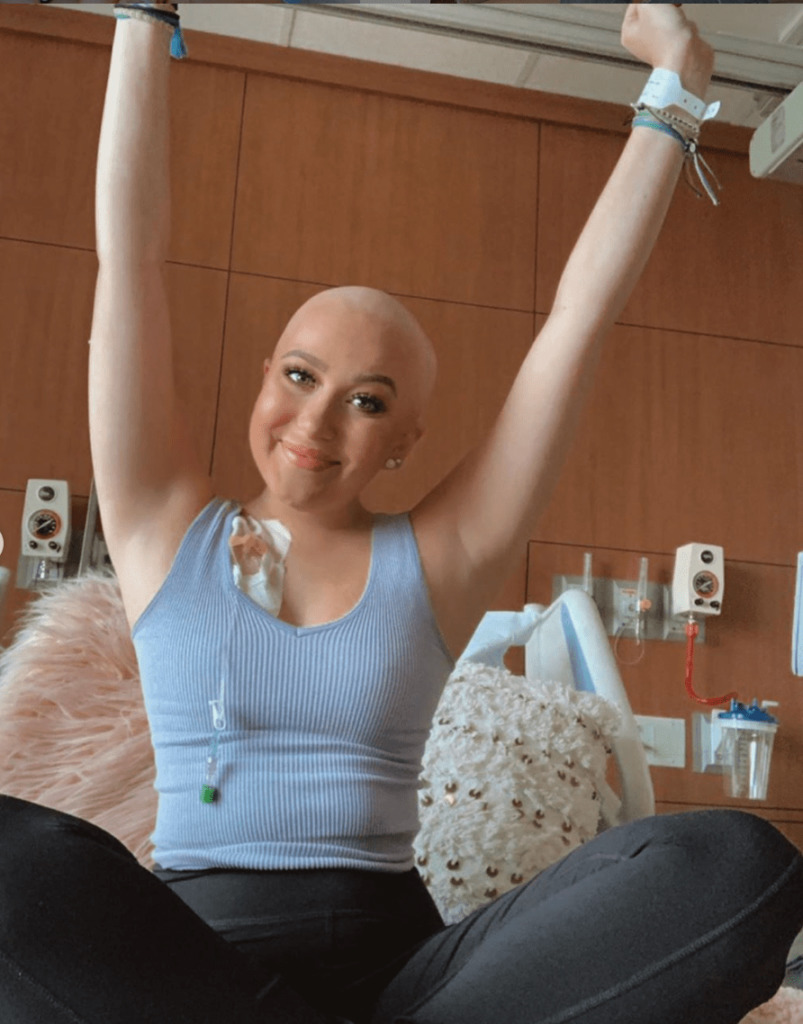
End of Treatment
Mid-treatment scan
I didn’t get the results for about a week or so. I had that CT after my third round of chemotherapy, and of course you have to wait to go over that with your oncologist.
I waited until I was going to be admitted into my fourth round of chemotherapy. I was just talking with my oncologist, and she brought up being in remission.
We were like, “Wait, what?” She’s like, “Wait, nobody told you?” We’re like, “Yeah, no one has told us that yet!”
“In remission”
I had a good feeling at that point that the chemo was working and going along with the course, because during the good weeks, I started to feel physically a lot better. I was like, “I have a good feeling it’s working,” but I definitely did not feel that I was going to be in remission.
It definitely was such a great surprise, especially to hear right before I was going to go in for my hospitalization for chemotherapy. As that progressed, it was a lot harder for me just being stuck in the hospital.
I didn’t look forward to it, so that definitely lifted my spirits and helped me get through everything.
Finishing the chemo regimen
They quickly said that [I had to finish the regimen] right after they said I was in remission. “Although this is great news, we still want to finish your chemotherapy regimen. We don’t want to stop right there, just to make sure and do that extra layer of precaution.”
At that point, I was already staying at home instead of being in school. I figured I already fought half this battle. What’s a few more months? Just gotta keep on pushing and get through it.
That whole chemotherapy regimen was set in stone, and regardless of me being in remission in the middle of it or not, was to finish out the whole scope of everything.
Follow-up protocol
The regimen was going to be a follow-up scan every 3 months and a meeting with my oncologist. However, since I did get that PET scan right after my treatment, they wanted to push everything back to wait 6 months post treatment to get a follow-up scan. I was still going to meet with my oncologist and get blood work every 3 months.
With anxiety about everything, you come out of treatment and are so used to seeing doctors all the time, then go to being put back in the regular world.
I wasn’t comfortable with waiting 6 months, so I pushed and advocated a lot for myself to get one a little bit sooner.
It’s a little shaky. The last meeting I had with my oncologist, they wanted to do a 6-month post-scan, then depending on what that was, see from there.
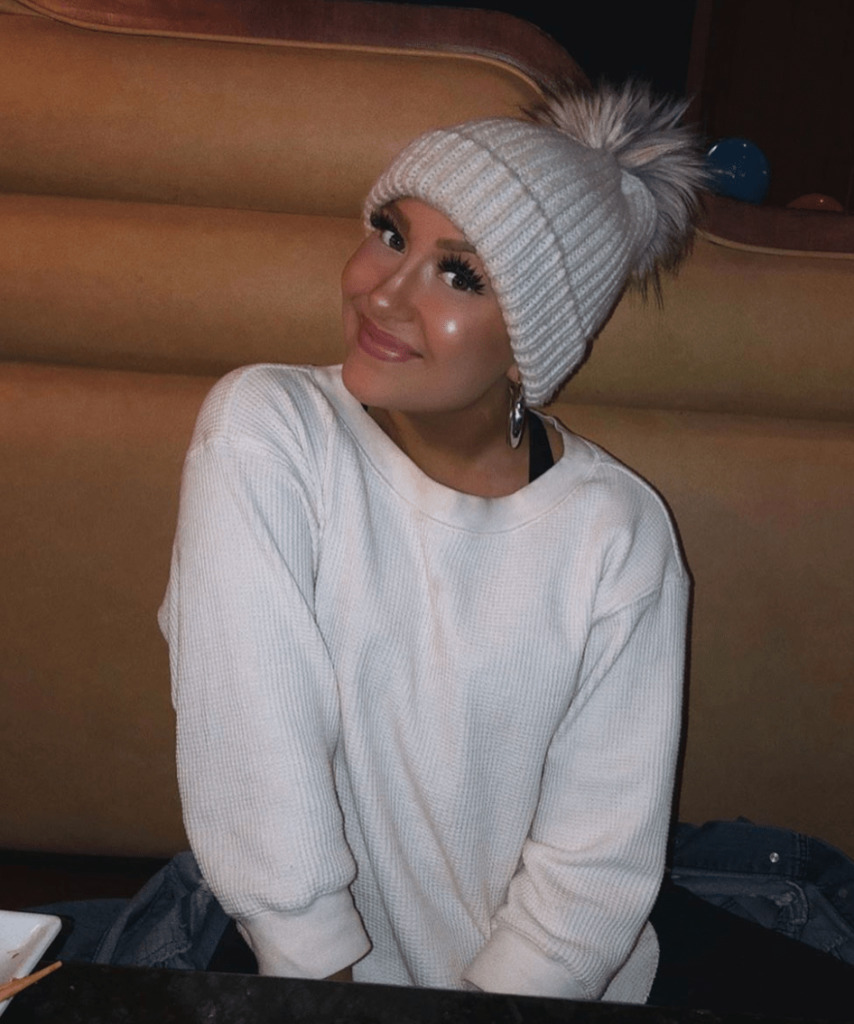
COVID-19 and cancer
I was supposed to get my scan done today. Initially the 6-month visit was supposed to be in June, and I really advocated for myself just to give myself some peace of mind to get one a little sooner. That was supposed to be today, but because of coronavirus it got pushed to next month.
It definitely is a little frustrating. I completely understand given the situation. I think just wanting to have that reassurance in general that everything is still okay — and especially in a time like this, because things with neutropenia, cancer in general, is already such a scary thing.
Adding coronavirus into the mix, I just want to make sure that I am either healthy or if I’m not, taking the right precautions in this kind of environment.
After I went in for my 3-month blood work, my blood work wasn’t up to par. I still had a lower white blood cell count, which makes some more susceptible. Just because of everything that we went through, it ending so close to when the coronavirus started, me and my family were already so used to taking so many precautions.
Now, especially with this, I think everyone should be staying at home, but some people don’t follow that as much. For me, that’s not even a possibility going to the grocery store. I completely stay at home.
It is scary, especially going through something like this, being immunocompromised. I feel it gives me a very different outlook on the situation, in protecting myself and taking precautionary measures.
Getting Support
What do you wish you had known before treatment?
I wish I knew more about the mental part of it all, because I feel like universally, you know it’s going to be a hard thing to go through physically. I don’t think I understood how much it would affect me emotionally.
You want to be that really positive and strong person all the time through your treatment, not only for yourself but for others.
Especially with social media, it’s easy for people to post the happy, pretty parts — which I’m victim of, too — but I would always look at other people going through a similar situation, and it just appeared like they were handling a lot of things better than I was.
As much as you want to stay really positive and strong the whole time, there are moments where you aren’t. I think I beat myself up a lot because I felt certain ways or reacted certain ways.
I wish I knew whatever reaction or way I felt about anything during my treatment was justified and valid.
What helped getting through the toughest times?
Leaning on those you have around you that want to support you. My family was such a support system. Cancer is very much not just a singular battle, but a group effort.
Going through cancer is such an intense experience that it’s really hard to expect yourself to deal with a lot of that on your own.
Me leaning on other people when I was feeling down. Just having that emotional support from other people helped me a lot in my lowest points. Turning to my family or whomever to boost my spirits is what helped me the most.
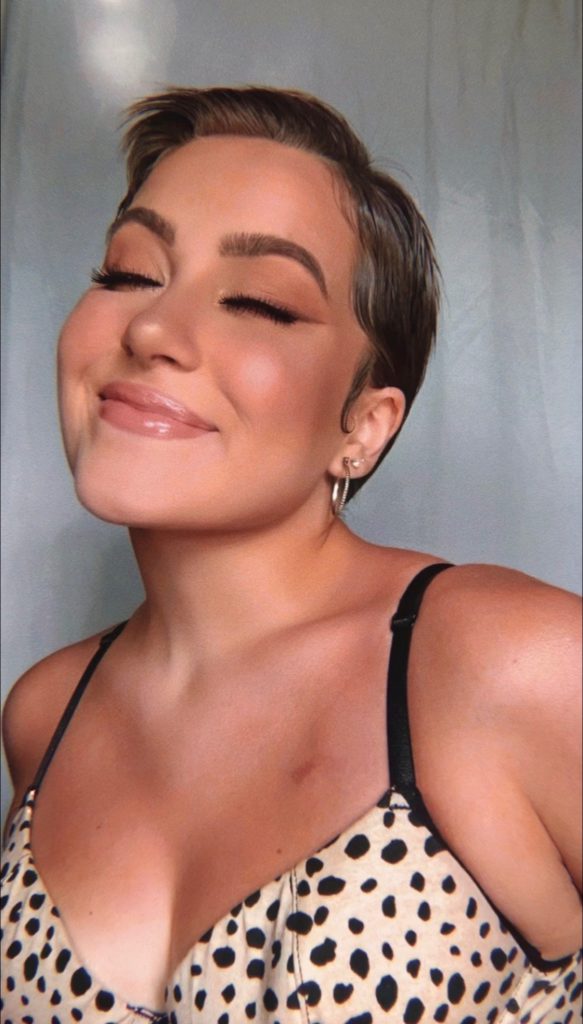
How to ask people for support
It can be a little hard sometimes, because it’s hard to ask for help. I also feel other people on the outside of the situation so much want to help, but they don’t know in what ways is the best to help you.
For myself, I really struggled with asking people for help because I didn’t want to feel like I was a burden. Just knowing that people overwhelmingly want to be there for you and help you through this difficult time, push that away and try to be open in what you want help with.
How people can support cancer patients
Really showing up and being there for that person instead of just saying things like, ‘Let me know what I can do.’
»MORE: What kind of support cancer patients say helped the most
I feel like that’s an easy way out. “Oh, if you need anything, I’m there for you,” versus doing things actively to be there for that person, whether that be helping them emotionally or just running errands or grocery shopping if that person isn’t able to get up and do a bunch of things that day.
It’s a lot more beneficial to do those actions, actively doing it rather than just saying it.
Be your own advocate
Editor’s Note: Erin says her primary care doctor didn’t tell her about abnormal blood test results until a couple weeks later, when she’d already gotten the diagnosis.
It was even a few days after I’d gotten my diagnosis. I think it was maybe 3 or 4 days [later], and they called. “There’s some abnormalities. We want you to come back in.”
We’re already well aware. It was frustrating, and I am very grateful that I was able to get that colonoscopy right away. I feel if I waited, following the timeline of just my primary doctor, it would have taken a lot longer to get a diagnosis.
It is so important to advocate for yourself because at the end of the day, it’s your body. It’s your life. You’re going to know your body better than anybody else.
If I would have just listened to the people around me and hadn’t pushed to see a doctor, ultimately get my diagnosis or push to get this scan… I prevented a lot of situations that could have had a very different outcome had I not advocated for myself.
If you think there’s a problem or if there’s something that you’re concerned about in terms of your health, it’s your life on the line. Be convicted in what you want or what you think needs to be done for you, because you know yourself better than anybody else.
»MORE: How to be a self-advocate as a patient
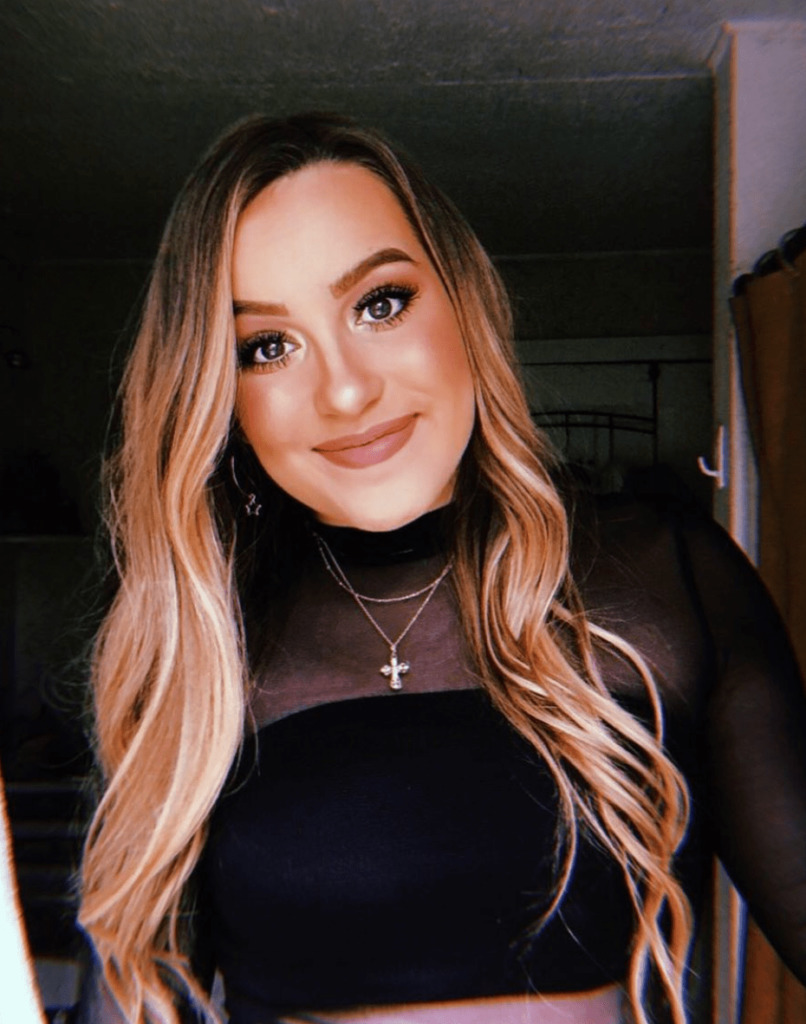
Inspired by Erin's story?
Share your story, too!
Diffuse Large B-Cell Lymphoma (DLBCL) Stories
Ashley P., Diffuse Large B-Cell Lymphoma (DLBCL), Stage 4
Symptoms: Feeling like holding breath when bending down or picking up objects from the floor, waking abruptly at night feeling “off,” one episode of fainting (syncope), presence of a large mass in the breast
Treatments: Chemotherapy, bridge therapy of chemotherapy and radiation, CAR T-cell therapy
Melissa B., Relapsed Diffuse Large B-Cell Lymphoma (DLBCL)
Symptoms: Lump in the left breast, persistent rash (started near the belly button and spread), intense fatigue and energy loss
Treatments: Chemotherapy (R-EPOCH), Neulasta, radiation therapy, surgery (to remove scar tissue and necrosis), autologous stem cell transplant
Jen N., Diffuse Large B-Cell Lymphoma (DLBCL), Stage 4B
Symptoms: Blood-tinged phlegm, whole-body itching, shortness of breath, lump near collarbone, night sweats, upper body swelling, rapid weight loss
Treatments: Chemotherapy, immunotherapy, lumbar puncture, autologous stem cell transplant
Jim Z., Diffuse Large B-Cell Lymphoma (DLBCL)
Symptoms: Sudden and severe head and neck swelling, purplish facial discoloration, bulging neck veins
Treatments: Surgery (resection and reconstruction of the superior vena cava), chemotherapy
Burkitt Lymphoma Stories
Ashlee K., Burkitt Lymphoma, Stage 4
Symptoms: Abdominal pain, night sweats, visible mass in the abdomen
Treatments: Surgery (partial colectomy to removed 14 inches of intestine), chemotherapy
Emily S., Burkitt Non-Hodgkin Lymphoma, Stage 4
Symptoms: Constant fatigue, tongue deviated to the left, abscess in right breast, petechiae on legs, night sweats, nausea and vomiting, persistent cough
Treatments: Chemotherapy, stem cell transplant, immunotherapy
Erin R., Diffuse Large B-Cell Lymphoma (DLBCL) & Burkitt Lymphoma, Stage 4
Symptoms: Lower abdominal pain, blood in stool, loss of appetite
Treatments: Chemotherapy (Part A: R-CHOP, HCVAD, Part B: Methotrexate, Rituxan, Cytarabine)
